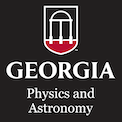Magnetic nanoparticles have long been an important class of biomaterials. Iron oxide nanoparticles, for instance, have been used in clinics as MR contrast probes, mostly for improving the visibility of lesions in reticuloendothelial system (RES) organs, such as liver and lymph nodes. Recently, a new set of chemistry has emerged, which allows one to prepare nanoparticles with fine control over a wide range of parameters, including size, shape, composition, magnetization, hydrodynamic size, surface coating and surface charge. Such a transition does not only affect the conventional applications of magnetic nanoparticles, but also opens many new avenues. The idea is to conceptualize a particle not only as a tiny magnetic crystal, but also as a platform of large surface-to-volume ratio. By harnessing the well-developed surface chemistry, one can load a wide range of functionalities onto the particle surface. These include biovectors--such as peptides and antibodies--which are able to steer the migration of nanoparticles in a living subject and to accumulate them preferentially in areas of interests, such as in tumors. The nanoplatforms can be further loaded with imaging motifs or therapeutic agents, and as a consequence, to be upgraded as multifunctional nanogadgets of multimodal imaging capabilities or theranostic features. In this talk I will introduce some of our recent work in this field.


